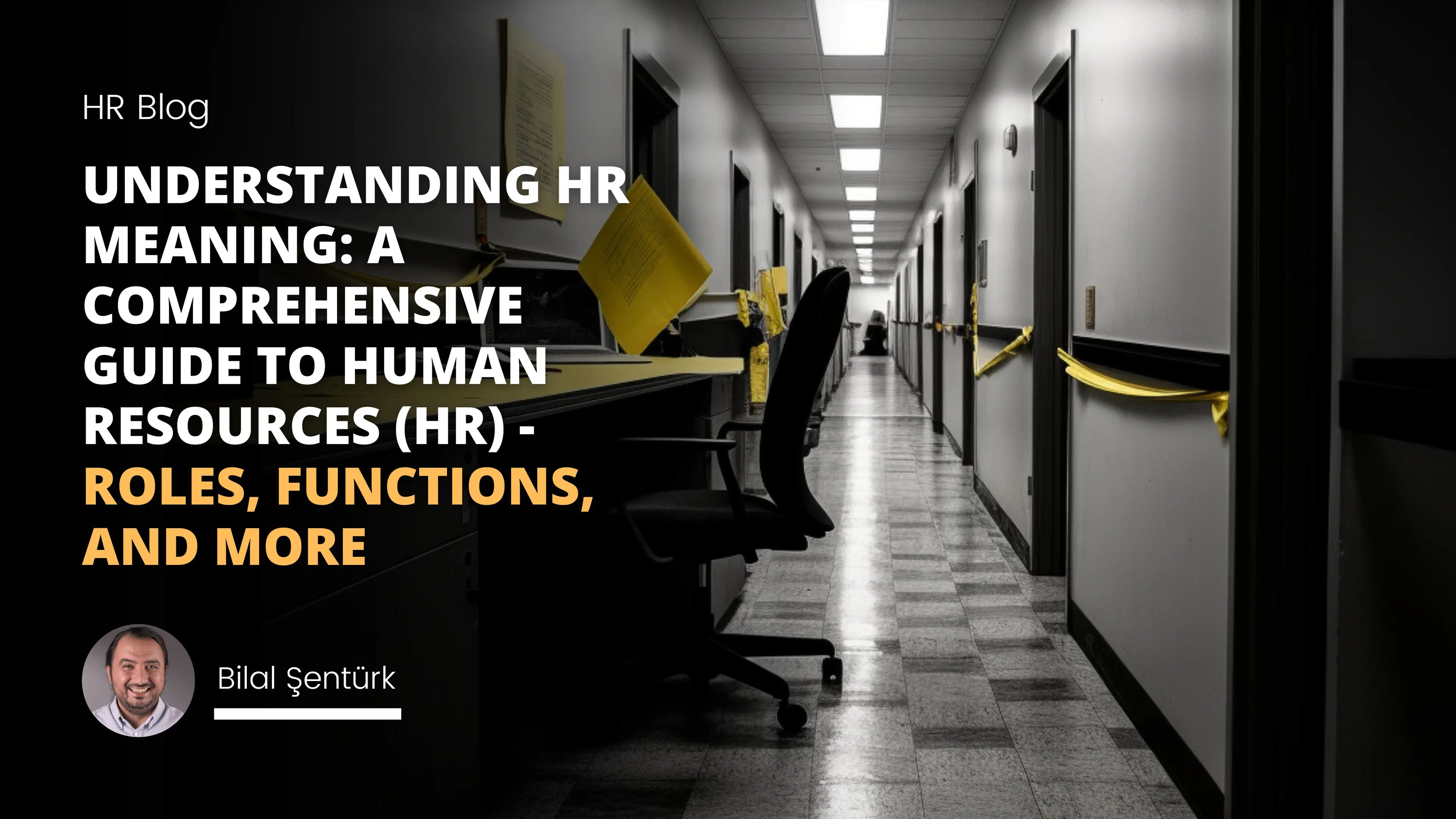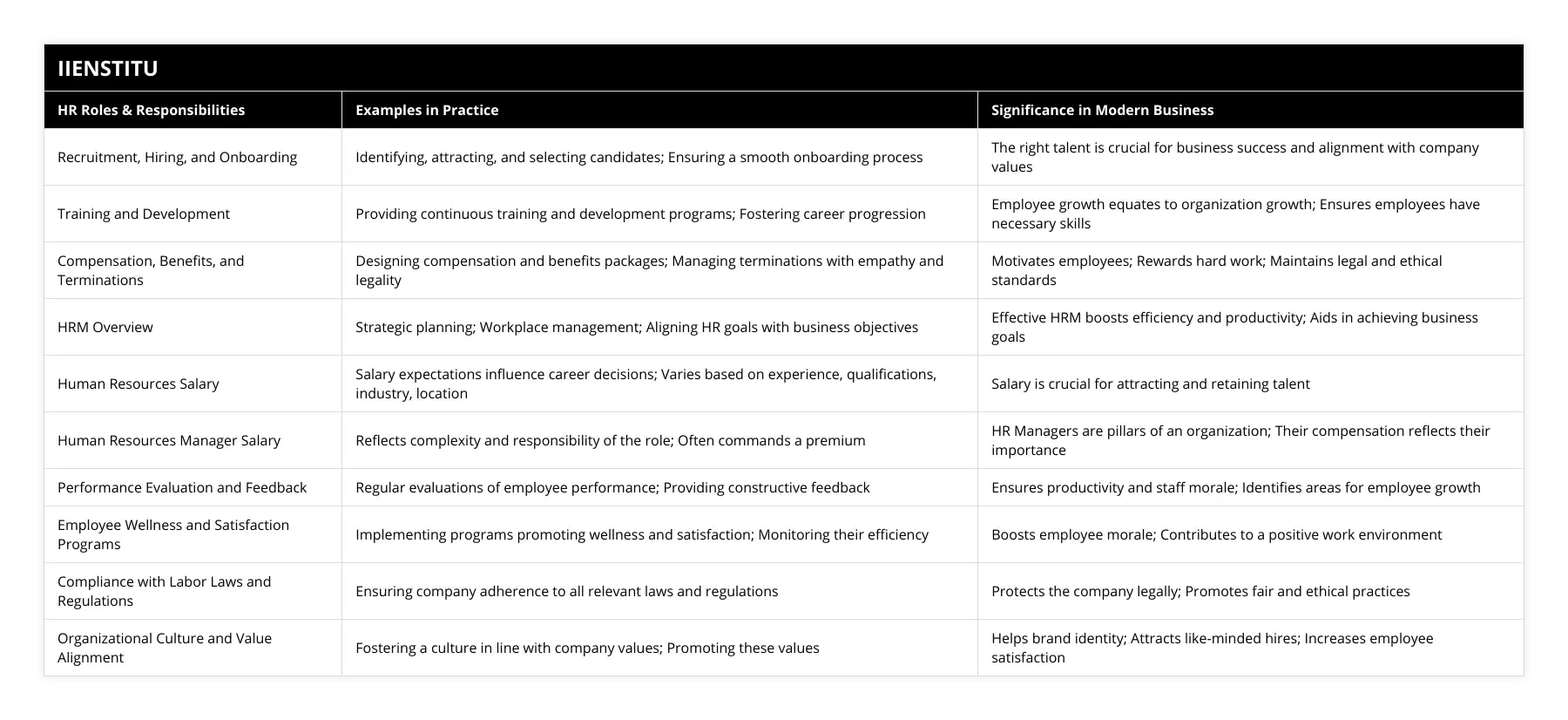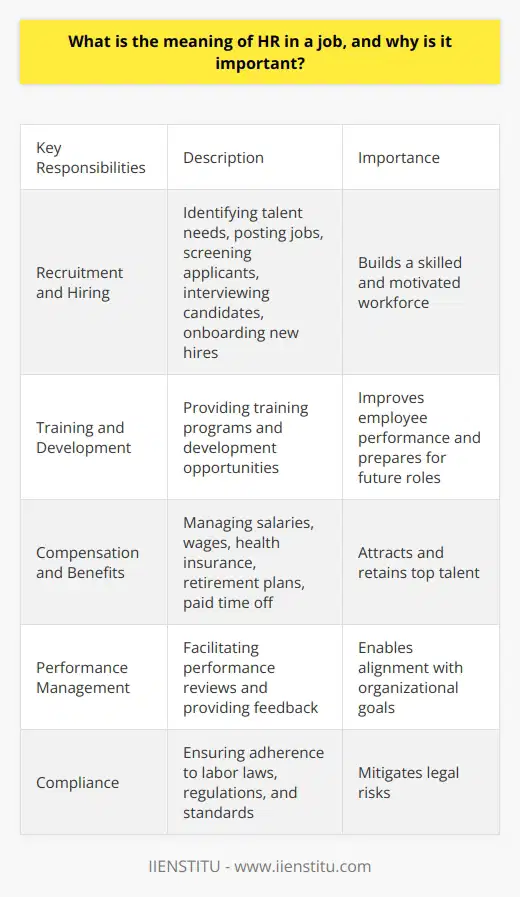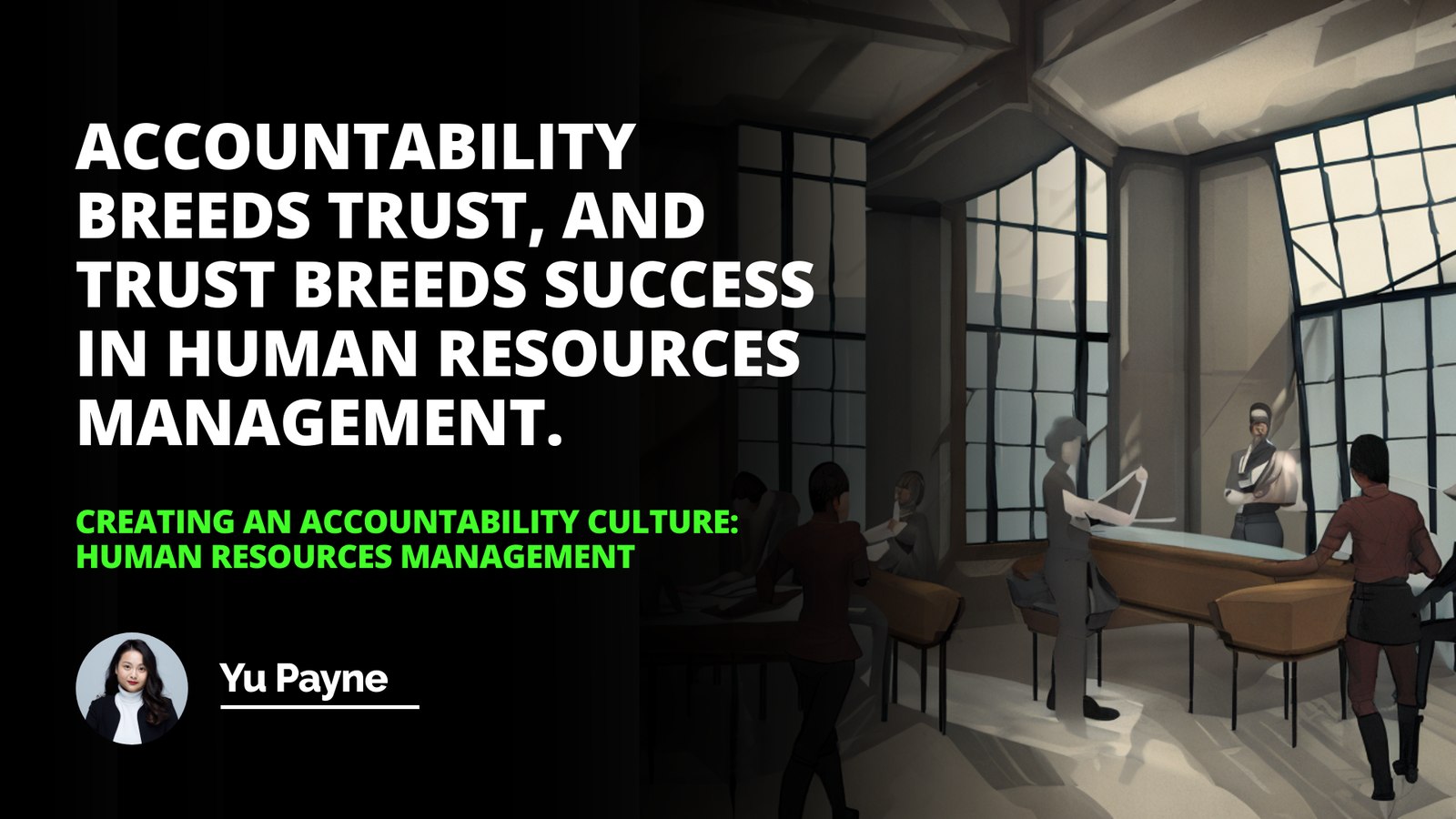
In today's complex and dynamic business environment, the term HR or Human Resources is more than just a buzzword. But what exactly does this abbreviation stand for, and why is it so pivotal in contemporary organizations?
Defining HR Meaning: Human Resources, often referred to simply as HR, is the division of a company responsible for managing all aspects related to its workforce. From recruitment, hiring, onboarding, and training to providing compensation, benefits, and support, HR plays a multifaceted role that extends far beyond traditional administrative tasks.
The Importance of Human Resources (HR) in the Modern Business World: Human resources isn't just about hiring employees; it's about ensuring they're aligned with the company's mission and values, nurtured to their full potential, and motivated to contribute to organizational success. HR is the backbone of an enterprise, guiding the most vital asset of any business - its people.
In the following sections, we will explore the various roles, functions, and responsibilities of HR. We will also delve into specialized topics like human resources salary, human resources manager salary, and the evolving landscape of HR in the digital age.
Whether you're an HR professional, a business leader, or simply curious about the HR meaning, this comprehensive guide aims to answer your questions, solve your problems, and provide you with valuable insights into the fascinating world of Human Resources.
Roles and Responsibilities of HR
Recruitment, Hiring, and Onboarding: The heart of any organization lies in its talent. Human Resources (HR) is instrumental in identifying, attracting, and selecting candidates that align with the company's values and objectives. The process doesn't stop at hiring; HR ensures a smooth onboarding process that helps new hires integrate into the organizational culture.
Training and Development: The growth of employees is synonymous with the growth of the organization. HR focuses on continuous training and development programs, honing skills, and fostering career progression. Whether it's technical expertise or soft skills, HR creates pathways for employees to excel.
Compensation, Benefits, and Terminations: Employees are motivated by more than just a paycheck. HR designs comprehensive compensation and benefits packages, recognizing and rewarding hard work and achievements. When terminations are necessary, HR manages them with empathy and adherence to legal requirements.
Human Resource Management (HRM): An Overview: HRM, or Human Resource Management, is a broader concept that encapsulates all the activities involved in managing the organization's workforce. It's not just about hiring and firing; it's about strategic planning, workplace management, keeping up to date with policies, and aligning HR goals with the company's business objectives.
Related Course: Hr Certificate Programs

Understanding the various roles and responsibilities is key to unraveling the full HR meaning. From ensuring the right hires to fostering growth, safeguarding well-being, and driving organizational alignment, HR is a multifaceted and indispensable part of modern businesses. Its functions are critical not only to the success of the individuals within the company but to the success of the company as a whole.
As we move forward, we'll delve into a more in-depth exploration of the Human Resources Department, including specialized topics like human resources salary and human resources manager salary.
Human Resources Department: In-Depth
Human Resources Salary: What to Expect?
A career in HR can be both rewarding and fulfilling. Human resources salary varies significantly based on factors such as experience, qualifications, industry, and location. Whether you're an HR generalist or specialize in areas like recruitment or training, understanding salary expectations can guide your career decisions.

Human Resources Manager Salary: An Insight
The role of an HR manager is pivotal within an organization. They oversee the entire human resources department, aligning with the company's goals and strategies. Human resources manager salary reflects the complexity and responsibility of this role, often commanding a premium compared to other HR positions.
Examples of Human Resources: Real-world Scenarios
Understanding HR goes beyond theories and definitions. Here are 10 examples of human resources that illustrate the broad spectrum of tasks and functions performed by HR:
Employee Recruitment and Selection
Compensation and Benefits Planning
Training and Professional Development
Performance Evaluation and Feedback
Employee Wellness and Satisfaction Programs
Compliance with Labor Laws and Regulations
Conflict Resolution and Mediation
Organizational Culture and Value Alignment
Strategic Workforce Planning
Social Responsibility and Community Engagement
The Human Resources Department is a complex entity that extends far beyond the traditional administrative functions. From salaries to real-world examples, this section has aimed to provide a comprehensive and specialized insight into what HR meaning encompasses. As the workforce's backbone, HR plays a critical role in fostering growth, satisfaction, and alignment within an organization.
In the next section, we will explore the fascinating landscape of HR in the digital age, diving into topics like Social HR and how HR job descriptions are evolving with technology.
The Landscape of HR in the Digital Age
Social HR: A New Horizon
In the age of social media, HR isn't confined to the four walls of an office. Social HR refers to the use of platforms like Facebook, LinkedIn, and Twitter for HR activities, including recruiting, employment branding, and employee engagement. It aligns HR goals with the company's business objectives in a digital world.
Human Resource Management (HRM) in the Technological Era
Technology has revolutionized how HR functions. Automation, artificial intelligence, and data analytics are shaping human resource management, making processes more efficient and personalized. From virtual onboarding to AI-powered recruitment tools, HRM is more dynamic and adaptive than ever.
HR Job Description: How it's Evolving
The HR job description isn't static; it's evolving with the times. As technology advances, HR professionals must adapt, acquiring new skills and embracing innovative tools. The HR job description now includes proficiencies in software, data analysis, and digital engagement, reflecting the modernized role of Human Resources.
Human Resources Degree: The Path to a Career in HR
Pursuing a human resources degree equips aspiring HR professionals with the knowledge and skills needed in this ever-changing field. Whether it's a bachelor's or master's degree, an HR education prepares individuals for various roles within the human resources department, aligning them with the industry's present and future needs.
The landscape of HR is ever-changing, especially in the face of digital transformation. Understanding HR meaning today requires an acknowledgment of how technology is reshaping everything from recruitment to employee engagement. From Social HR to the evolution of HR job descriptions and the importance of a human resources degree, this section offers an insightful glimpse into the future of HR.
Next, we will wrap up with a final summary and reflection on the comprehensive world of Human Resources, connecting the various threads explored throughout this guide.
Summary and Reflection: Understanding the Comprehensive World of Human Resources
HR, or Human Resources, is not just a department or a set of functions. It's the lifeblood of an organization, shaping its culture, growth, and success. Throughout this guide, we've explored various facets of HR, uncovering what HR meaning truly encompasses.
From the roles and responsibilities of HR, the nuances of human resources salary, and human resources manager salary, to real-world examples and the exciting landscape of HR in the digital age, we've covered it all. We've delved into the evolving HR job description, the importance of a human resources degree, and even the emerging trend of Social HR.
HR is dynamic, multifaceted, and indispensable. It's not just about hiring and firing; it's about people, growth, alignment, and innovation. The field of HR continues to evolve, reflecting the changing needs of organizations and the workforce.
Final Thoughts
Understanding HR is essential for anyone engaged in business, management, or even as an employee. It's about recognizing the value of people and how they are managed, developed, and nurtured within an organization.
Whether you're an HR professional, a manager, or someone curious about this vital field, we hope this guide has provided you with valuable insights, clarity, and a comprehensive understanding of HR meaning.

Frequently Asked Questions
What is the meaning of HR in a job, and why is it important?
HR, or Human Resources, refers to the department responsible for managing all aspects related to an organization's employees. This includes recruiting, hiring, training, compensation, benefits, and more. HR is vital because it ensures the alignment of the workforce with the company's goals, maintains compliance with labor laws, and fosters a positive organizational culture.

What educational paths are available for those interested in a Human Resources career, and what is the typical human resources salary?
Pursuing a human resources degree is a common pathway for those interested in an HR career. Degrees may range from associate's to master's, with specialized certifications also available. The human resources salary varies widely depending on factors such as education, experience, industry, and location. Entry-level HR professionals may earn around $40,000 to $50,000 annually, while experienced HR managers may earn upwards of $100,000.



